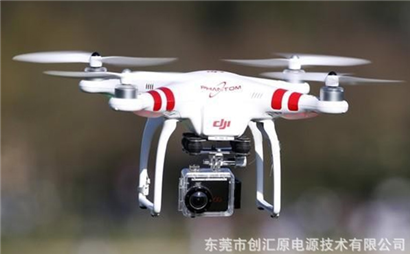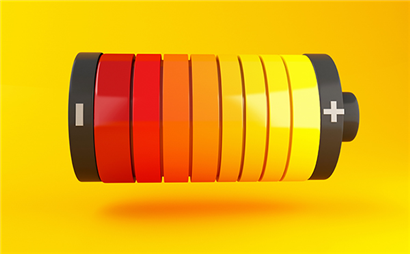Customer Service:
+86 0769 8269 8200
The full name of the lithium battery used in UAVs is "Li polymer battery" (also known as polymer lithium battery), generally referred to as lithium battery. Lithium polymer battery is a new type of battery with many obvious advantages, such as high energy density, miniaturization, ultra-thin, lightweight, high safety and low cost. In terms of shape, lithium polymer batteries have the feature of ultra-thin, which can be made into batteries of any shape and capacity according to the needs of various products. The outer packaging is aluminum plastic packaging, which is different from the metal shell of liquid lithium batteries. Internal quality hazards can be immediately displayed through the deformation of the outer packaging, such as swelling.
Let's start with the basic parameters of the battery. Taking a 22.2V 10000mAh UAV power battery as an example, it is composed of six lithium battery cells with a rated voltage of 3.7V and a capacity of 10000mAh in series, which is commonly known as 6S1P. There are also 6S2P batteries, which are composed of 12 5000mAh batteries in parallel and in series. It should be noted here that the safety factor of 6S1P is higher than that of 6S2P, because the structure of 1P is twice as simple as that of 2P, and the price of 1P is also higher.
In the lithium battery of UAV, the voltage of single battery cell 3.7V is the rated voltage, which is obtained from the average working voltage. The actual voltage of a single lithium battery cell is 2.75~4.2 V. The superscript capacitance of the lithium battery is the power obtained by discharging 4.2 V to 2.75 V. Lithium battery must be used within the voltage range of 2.75~4.2V. If the voltage is lower than 2.75V, it is an over discharge. The lithium battery will expand and the internal chemical liquid will crystallize. These crystals may pierce the internal structural layer and cause a short circuit, or even make the lithium battery voltage zero. When the single chip voltage is higher than 4.2V during charging, it is overcharged. The internal chemical reaction is too fierce, and the lithium battery will expand. If it continues to charge, it will expand and burn. Therefore, the battery must be charged with a regular charger that meets the safety standards, and it is strictly prohibited to modify the charger without permission, which may cause serious consequences!
It should also be noted that the voltage of the single battery cell of the UAV power battery should not be applied to 2.75V. At this time, the battery can no longer provide effective power for the aircraft to fly. In order to fly safely, the single alarm voltage can be set to 3.6V. If this voltage is reached or close to this voltage, the controller should immediately execute the return or landing action to avoid the aircraft explosion due to insufficient battery voltage as far as possible.
The discharge capacity of the battery is expressed in multiples (C), which means the maximum discharge current that can be reached according to the nominal capacity of the battery. Common batteries for UAVs are 15C, 20C, 25C or higher. As for the number of C, simply put, 1C is different for different capacity batteries. 1C means that the battery can work continuously for 1 hour at the discharge rate of 1C. For example, if the battery with 10000mAh capacity works continuously for one hour, the average current is 10000mAh, that is 10A, and 10A is the 1C of the battery. If the battery is marked with 10000mAh 25C, the maximum discharge current is 10A × 25=250A, if it is 15C, the maximum discharge current is 10A × 15=150A, so it can be seen that when the aircraft is flying in a large dynamic state, the higher the C number, the more current the battery can provide according to the instant of power consumption, and its discharge performance will be better. Of course, the higher the C number, the higher the battery price will also be. It should be noted here that the battery should not be discharged beyond the discharge C of the battery, otherwise the battery may be scrapped or burn and explode.
We should stick to six "no's" in the use of batteries. The correct use is the best way to extend the battery life.
1. But charge
There are requirements for chargers. Some chargers do not have complete power off function after charging, which leads to that the single battery has not stopped charging when it is fully charged to 4.2V. In addition, some chargers are prone to the problem of not stopping charging due to aging components after using for a period of time. Therefore, someone must look after the lithium polymer battery when charging. When it is found that the charging time is too long, it is necessary to manually check whether the charger fails, If there is a fault, the battery should be unplugged as soon as possible, otherwise the lithium polymer battery will be overcharged, which may affect the battery life or cause explosion and fire. In addition, we remind you that you must charge the battery according to the specified charging C number or lower C number, and the charging current must not exceed the specified charging current.
2. But put
The discharge curve of the battery shows that the voltage drops rapidly at the beginning of discharge, but the voltage drops slowly when the discharge reaches 3.9~3.7 V. However, once the voltage drops to 3.7V, the speed of voltage drop will be accelerated, and poor control will lead to over discharge, which may damage the battery, or cause explosion if the voltage is too low. Some friends will overdischarge every time they fly because they have few batteries. Such batteries are very short-lived. The strategy is to fly as little as one minute, and then fly one more cycle. It is better to buy two more batteries than to fly the battery beyond the capacity limit every time. Make full use of the battery alarm. Once the alarm is given, it should be lowered as soon as possible.
3. Unsatisfactory electricity storage
Fully charged batteries cannot be stored at full charge for more than 3 days. If they are not discharged for more than a week, some batteries will directly bulge, and some batteries may not bulge temporarily. However, after several times of full charge storage, the batteries may be directly discarded. Therefore, the correct way is to charge the battery after receiving the flight mission. If there is no flight mission within 3 days after the battery is used, please charge the single chip voltage to 3.80~3.90V for storage. If the battery does not fly due to various reasons after charging, the battery should also be discharged to 3.80~3.90V within 3 days after charging. If the battery is not used within three months, the battery will be charged and discharged once and then stored again to prolong the battery life. The battery shall be stored in a cool and shady environment. When the battery is stored for a long time, it is better to put it in a sealed bag or a sealed explosion chamber. The recommended ambient temperature is 10~25 ° C, and it is dry and free of corrosive gas.
4. No skin damage
The outer skin of the battery is an important structure to prevent battery explosion and fire due to liquid leakage. The damage of the aluminum plastic outer skin of the lithium polymer battery will directly lead to fire or explosion of the battery. The battery shall be handled with care. When the battery is fixed on the aircraft, the strap shall be tightened. Because it is possible that the battery will be thrown out due to loose ties during dynamic flight or airplane crash, which is also easy to damage the battery skin.
5. No short circuit
This often happens during the maintenance and transportation of the battery welding line. Short circuit will directly lead to battery ignition or fire explosion. When it is found that the battery is disconnected after a period of use and needs to be soldered again, pay special attention not to contact the positive and negative electrodes of the battery at the same time. In addition, during the transportation of batteries, the best way is to cover each battery with a self sealing bag and place it in an explosion-proof box, so as to prevent short circuit or skin breaking caused by the positive and negative pole of a battery touching other conductive substances due to turbulence and collision during the transportation.
6. Not catch cold
This principle will be ignored by many people. Low temperature weather often occurs in the north or high altitude areas. At this time, if the battery is placed outside for a long time, its discharge performance will be greatly reduced. If it has to fly at normal temperature for a long time, there must be a problem. At this time, the alarm voltage should be increased (for example, the alarm voltage of a single chip should be adjusted to 3.8V), because the voltage drop will be very fast in a low temperature environment, and the alarm will drop as soon as it rings. In addition, the battery should be insulated. Before takeoff, the battery should be kept in a warm environment, such as in the house, car, and incubator. Quickly install the battery and perform the flight mission when taking off. When flying at low temperature, try to shorten the time to half of the normal temperature to ensure safe flight.
The article is excerpted from: micro headline · article http://www.wtoutiao.com/p/k51hbO.html

Tightness of preventing electric vehicle battery from bulging in summer

Six maintenance rules for lithium battery of UAV

Battery Breakthrough: Scientists have built 10 times the capacity of lithium silicon battery

Rechargeable solid state batteries are expected to accelerate the energy collection market

CHY Power Technology supply with one-stop smart energy storage solution,We strive to provide reliable, sustainable and versatile one-stop outdoor and household backup power solutions for millions of homes and communities around the world.

Customer Service:
+86 0769 8269 8200
Add: No. 2 Qinghe Road, Huangjingkeng Village, Huangjiang Town, Dongguan City, Guangdong Province, China
E-mail: peter@aisun-power.com
Copyright © 2022 Dongguan CHY Power Technology Co., Ltd All rights reserved YueICP NO.17160197